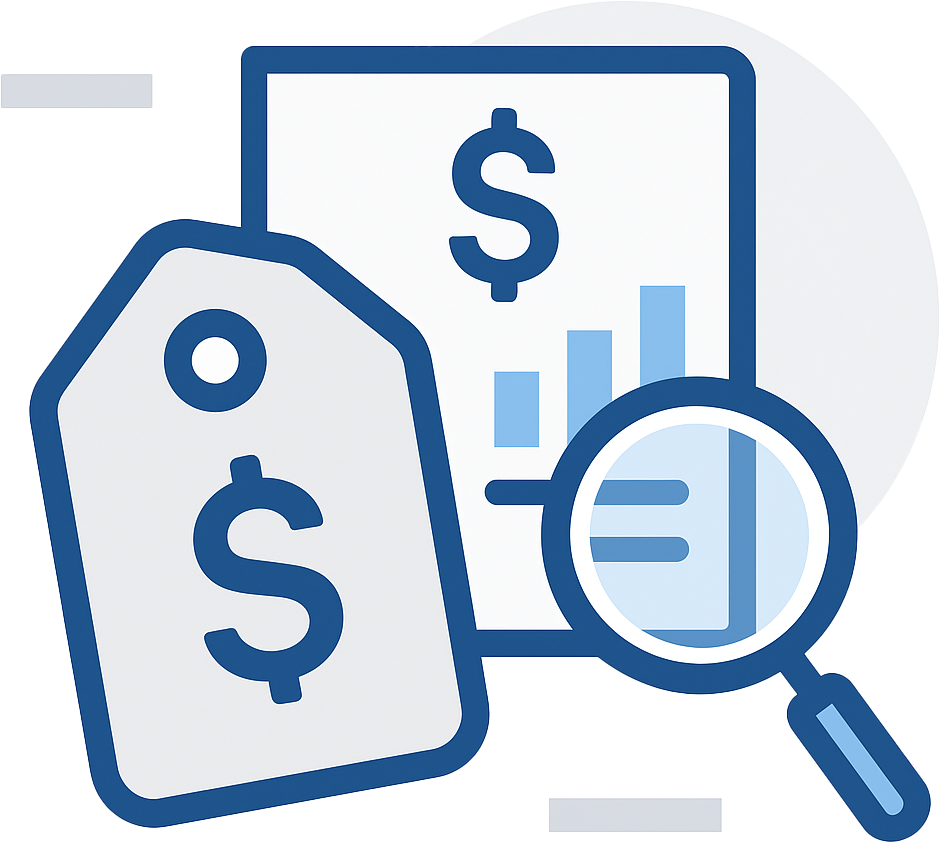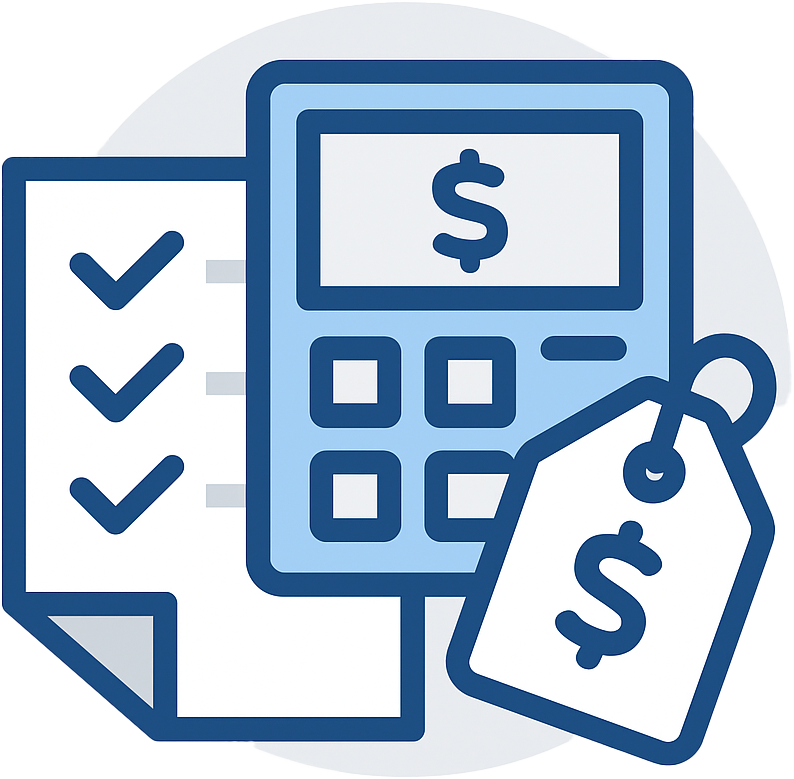The Top 5 Things You Can Do to Jumpstart Your Waste Management Program
Effective waste & hazardous waste management is not just about compliance with regulations—it’s about streamlining operations, reducing costs, and contributing to a healthier environment. Whether your business generates small quantities of waste or deals with large volumes, taking control of how waste is managed can make a significant difference.
If your business needs a waste management program, it can be hard to know where to start. While some decide to tackle it in-house, lots of businesses decide to hire a professional to take care of things for them. While you'll pay for help with a waste management plan up-front, savings down the line can be well worth it!
But hey, if you're thinking of going the DIY route, all the power to you! To get you started, here’s an in-depth look at five essential steps your business can take to better manage waste.
1. Understand the Types of Waste
The first step to an effective waste management program is understanding the different types of waste your business generates. Waste can be classified into several categories, each with its own handling, storage, and disposal requirements.
-
Solid Waste: This is the most common type of waste and includes materials like office trash, packaging, food scraps, and other non-hazardous refuse. While it might seem simple, managing solid waste effectively can still be a challenge, especially if your business generates large volumes. Many businesses are shifting focus to reduce solid waste through recycling programs and better purchasing decisions.
-
Hazardous Waste: Hazardous waste includes substances that pose a risk to public health or the environment. This can include anything from toxic industrial chemicals to certain cleaning supplies and common solvents. Managing hazardous waste is highly regulated, and failure to comply with regulations can lead to hefty fines. Make sure your team is trained to handle these materials safely and that disposal is done in accordance with local, state, and federal guidelines.
-
Universal Waste: A subset of hazardous waste, universal waste includes items like batteries, fluorescent bulbs, and paints. These items are often found in everyday operations, yet they require special disposal methods to avoid harming the environment. Universal waste regulations aren't necessarily the same as hazardous waste rules, but you still need to understand how to properly handle and dispose of these items.
Understanding the distinctions between these categories will help you develop a tailored waste management strategy that ensures compliance and optimizes waste disposal efforts. Not sure what types of wastes your business generates? We've got you covered - reach out to talk to a waste expert today!

2. Identify Your Waste Streams
Once you understand the types of waste your business generates, the next step is to identify your specific waste streams. Waste streams refer to the different sources and types of waste produced by your business operations. Each business has unique waste streams based on the products or services it provides.
For example, a manufacturing facility might generate scrap metals, solvents, and packaging materials, while an office building primarily produces paper waste and electronic waste (e-waste). The key here is to catalog all the waste your facility produces and categorize it into the appropriate streams. This allows you to track waste more efficiently and make informed decisions on how to manage each type.
If you need a hand in mapping out your waste streams, don't worry - we can take care of it all for you. Give us a shout and we'll have your waste streams dialed in in no time!

3. Be Diligent About Labeling and Sorting
This is a big one! Proper labeling and sorting are critical to ensuring your waste management process runs smoothly. Mixing incompatible materials or failing to clearly label waste can result in safety hazards, legal issues, and increased disposal costs.
Here are some best practices for managing waste at your facility:
-
Label Everything: Ensure that all waste containers are clearly labeled with the type of waste they contain. This is especially important for hazardous and universal waste, where proper labeling is not just a best practice—it can be a legal requirement, too. Labels should include important information such as the type of material, any relevant hazard symbols, and even the date the waste was generated. This helps prevent cross-contamination and ensures that waste is handled properly from the moment it is generated to its final disposal.
-
Sort at the Source: Sorting waste at the point of generation is the most efficient way to prevent cross-contamination and ensure proper disposal. Whether it’s sorting recyclables from non-recyclables, or hazardous from non-hazardous waste, having clearly labeled bins and designated areas for different types of waste can prevent mistakes.
-
Train Your Staff: Regular environmental training ensures that your employees understand the importance of proper labeling and sorting. It also keeps them up to date with any changes in regulations or company policies related to waste management.
By staying organized and diligent with labeling and sorting, you minimize the risk of regulatory penalties and improve the overall efficiency of your waste management system. If you're feeling overwhelmed, we get it. Let the professionals take care of all this stuff for you!

4. Understand Any Regular Reporting Requirements That Apply to You
Regulatory compliance is a significant component of waste management, especially for businesses that generate hazardous or regulated materials. Two key reporting requirements businesses often need to comply with are Tier II Reporting and TRI (Toxic Release Inventory) Reporting, both of which are part of the Emergency Planning and Community Right-to-Know Act (EPCRA).
-
Tier II Reporting: This annual report provides local emergency planning committees and fire departments with information about the hazardous chemicals stored at your facility. It ensures that first responders are prepared in case of an emergency. Make sure your facility’s chemical inventories are accurate and that you’re prepared to report them annually, as required by EPCRA.
-
TRI Reporting: The TRI program tracks the release of certain toxic chemicals that may pose a threat to human health or the environment. Businesses that manufacture, process, or otherwise use these chemicals in quantities above established thresholds must submit annual reports on how the chemicals are managed — and to what extent they are released into the environment, recycled, or treated.
Keeping up with these reporting requirements not only ensures your business remains compliant but also provides a valuable opportunity to assess your waste management practices and find areas for improvement. If you think you might need a hand with Tier II or TRI reporting, reach out to us, we're here to help! Or, if you're just looking to wrap your head around the basics, try our free online environmental assessment tool to get a baseline idea of whether these regulations may apply to your operation.

5. Assess Effectiveness from Cradle to Grave, Improve, and Repeat
Waste management doesn’t stop when waste leaves your facility. As part of your cradle-to-grave responsibility, you should be looking ahead to the final destination (and in the case of hazardous waste, you are likely legally required to ensure that hazardous waste is tracked from its generation to its final disposal!). Regularly assessing how effectively your waste is being managed can reveal areas where you can improve, reduce costs, or ensure better compliance.
- Are you reducing waste at the source?
- Are you following best practices for handling and disposing of waste?
- Are your third-party waste disposal vendors operating in compliance with local, state, and federal regulations?
Answering these questions allows you to pinpoint inefficiencies or compliance risks and make adjustments. For example, you may discover opportunities to increase recycling, reduce hazardous waste generation, or improve your reporting accuracy.
Once you’ve identified areas for improvement, implement changes and repeat the process of evaluation regularly. Waste management is not a one-time task; it’s an ongoing responsibility that requires continuous refinement and adaptation. If that sounds like more than you can (or want to) handle, let RMA take care of your waste program!

Final Thoughts: Waste Management as a Competitive Advantage
Effective waste management is not just about staying on the right side of regulations—it can also be a competitive advantage. By reducing waste, improving recycling efforts, and staying compliant with reporting requirements, your business can lower costs, minimize environmental impact, and enhance its reputation as a responsible corporate citizen.
Following these five steps will help you build a robust waste management strategy that not only meets regulatory demands but also sets the stage for operational efficiencies and long-term sustainability. If you’re unsure where to start or need assistance, reach out to us for a detailed waste management assessment tailored to your business’s specific needs. We’re here to help you navigate the complexities of waste management, so you can focus on what you do best.
By taking these steps, your business can stay compliant, reduce waste, and make a positive impact on the environment—all while improving your bottom line. Waste management might seem complex, but with the right strategy in place, it becomes an opportunity to improve operations and contribute to a more sustainable future.















